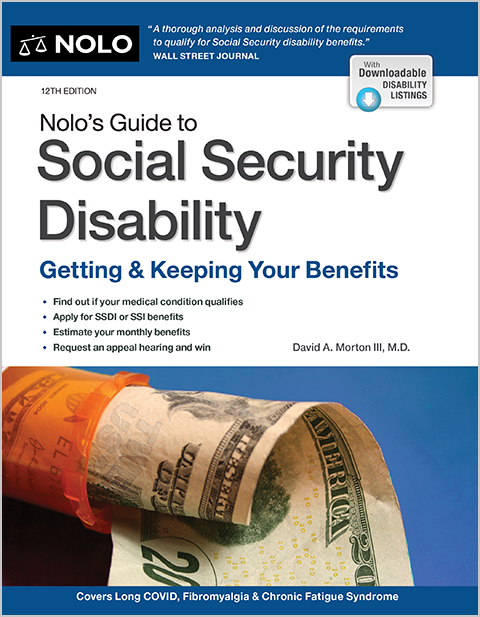Medicaid laws have made some older Medicaid planning strategies obsolete. Make sure you're up-to-date on the current rules if you plan to hold on to your house or buy an annuity or life estate.
Medicaid will pay for nursing home care or home health care only for people with limited assets, and you can't give away your assets to friends or family just to qualify for Medicaid. (If you transfer your assets for less than they're worth, you'll be ineligible to receive Medicaid benefits for a period of time—called the "period of ineligibility" or "penalty period.")
People anticipating needing long-term care designed some clever ways to try to get around the Medicaid rules that penalize gifts and transfers of assets. But Medicaid has changed many of its rules to stop people from gaming the system.
Here we discuss some of the ways people used to be able to make gifts while avoiding a transfer penalty. While the older techniques no longer work, there are some planning strategies you can still use—if you follow strict rules that are designed to protect Medicaid's budget.
Half-a-Loaf Strategy
The "half-a-loaf" strategy used to be one of the most popular Medicaid gifting strategies. Seniors who anticipated needing long-term care would gift half of their assets to their children (preserving "half a loaf"), and use the rest to pay for Medicaid during the penalty period.
The key to this strategy was to exploit the way that Medicaid used to calculate its asset transfer penalty (before the Deficit Reduction Act was passed). Under the prior law:
- transfer penalties began when an asset was gifted or transferred, rather than when the person applied for Medicaid, and
- transfer penalties were rounded down so that the penalty period was shorter.
Using the half-a-loaf strategy, individuals often made gifts to family members every month or every other month, depending upon state law. But now that the transfer penalty doesn't begin until a person applies for Medicaid (and all of the other qualifications are met for Medicaid), this type of gifting no longer works well.
Some Medicaid applicants will use an updated half-a-loaf strategy, where they will gift half of their assets to their children and buy an "annuity" with the other half to provide income to pay for a nursing home during the penalty period.
Purchasing Medicaid Annuities
An annuity is a financial product you can purchase to provide guaranteed income over a number of years. For Medicaid purposes, the annuity is usually purchased for the Medicaid applicant's spouse to provide for the spouse's expenses over the remainder of their life.
Purchasing an annuity converts an asset (cash) into a future monthly income stream for the spouse who doesn't need long-term care (called the "community spouse"). The community spouse's separate income isn't counted for Medicaid eligibility purposes. Because buying an annuity turns an excess asset into future income, the asset "disappears" for Medicaid purposes.
The strategy of purchasing an annuity to qualify for Medicaid still works for married couples, but there have been refinements in the law, making some of the older methods ineffective. In the past, Medicaid didn't require that annuities be purchased commercially, meaning that a private annuity contract could be drawn up between family members. If the Medicaid applicant died earlier than expected, the family member would benefit by not having to pay the money back.
Also, past rules didn't require that the money be paid in "substantially equal" monthly payments over the spouse's life expectancy. So, for example, a spouse might receive only interest only for 10 years, followed by a balloon payment of the remainder of the annuity. This technique helped preserve the bulk of the money in the annuity for the Medicaid applicant's heirs. And any money left in an annuity when a Medicaid recipient died could be left to their children.
Medicaid is wiser now, and anyone using these strategies will be ineligible to receive Medicaid benefits for a period of time. Today, all of the following must be true when a Medicaid applicant purchases an annuity (42 U.S.C. 1396p):
- The annuity must be purchased from a commercial insurance company.
- The annuity payments must be completed before the end of the community spouse's life expectancy.
- The annuity must be paid back in substantially equal monthly payments.
- The annuity must be irrevocable and nontransferable.
- The state of residence must be designated as a beneficiary of the annuity, so that, if there's money left over, the state can recover payments made by Medicaid.
In addition, some states have added additional rules, such as requiring the annuity term to be significantly shorter than the purchaser's life expectancy, or requiring the annuity term to last at least five years.
Purchasing Life Estates
Most people aren't familiar with the term "life estate." Basically, a life estate is a right to live in a home for the remainder of a person's life. When someone buys a life estate, they purchase this right to live in a home until their death. The purchase price is based on the value of the home and the age of the purchaser.
With this strategy, an applicant for Medicaid could purchase a right to live in the home of a child or other family member. The Medicaid applicant paid a sum to the child or family member for this right, based on the value of the life estate. This was a way for applicants to transfer money to their children or other family members to reduce their assets for Medicaid. The problem was that there was no requirement that the applicant actually live in the home. The net result was that this medicaid loophole allowed for a gift of money to a family member for nothing guaranteed in return—a perfect way to transfer money to family and protect it from any penalties imposed by Medicaid.
The law regarding purchasing life estates has changed. Medicaid now requires that a Medicaid applicant has to actually live in the home where the life estate has been purchased for at least one year after the purchase of the life estate. This new rule ensures that Medicaid applicants receive some benefit from what they've purchased. Also, the purchase price of the life estate can't be greater than what the life estate interest is worth.
As with annuities, Medicaid wants to make sure that when Medicaid applicants pay money for something in the five years before they apply for Medicaid, that they or their spouses receive something of equal value (during their lifetime).
Sheltering Money in Expensive Real Estate
In the past, a resident in a Medicaid-paid nursing home could own a house with a very high property value, never expecting to be able to return to live in it, without running afoul of Medicaid's strict asset limits. Today's rules state that a home is exempt from being counted toward Medicaid's asset limit (and doesn't need to be sold to pay for long-term care) only if 1) the applicant signs a statement that they intend to return to the house after long-term care, or 2) it's occupied by:
- the Medicaid applicant
- the applicant's spouse, or
- a dependent relative (a minor or disabled child).
Also, the Medicaid applicant can't have more than $713,000 in equity in the house in most states (in 2024). In some states with high property costs, like New York and Connecticut, the equity limit is $1,071,000. And a few states have equity limits that are in between these two thresholds. California has no equity limit (because it no longer has an asset limit for Medicaid).
Also, your state Medicaid agency may be able to put a lien against your home for the amount of Medicaid benefits paid out after you begin to live in a nursing home or receive home and community-based services (HCBS). Medicaid "estate recovery" rules vary by state, and in some states, houses that are owned jointly or owned by living trusts can't be taken for estate recovery purposes.
How to Safely Transfer Some Assets for Medicaid Planning
While giving away money using outdated Medicaid planning strategies will make you ineligible for Medicaid for a period of time, planning ahead can still be a good idea. There are still some asset transfers that might make sense (depending on your state's Medicaid rules) that won't disqualify you from getting Medicaid coverage for long-term care. For more information, read our article on asset transfers that are acceptable to Medicaid.


